Samsung has presented its flagship S-line smartphones for 2023. Usually, in addition to smartphones, the company also presents new headphones, smartwatches, or tablets. This year, Samsung decided to focus exclusively on smartphones. There were no surprises: the lineup consists of three models. Samsung Galaxy S23, Galaxy S23+, and Galaxy S23 Ultra. We have already managed to twist them in our hands and make a first impression. Although, of course, we will talk about them in detail in full reviews. In general, there are not many differences from last year's lineup. But there are quite important ones. The ones that users have been waiting for for a long time. In terms of design, the Ultra model is very similar to its predecessor, while the younger models have a redesigned back cover and camera unit. Now let's go into more detail.
What is Interesting about Samsung Galaxy S23 Ultra Line Flagship?
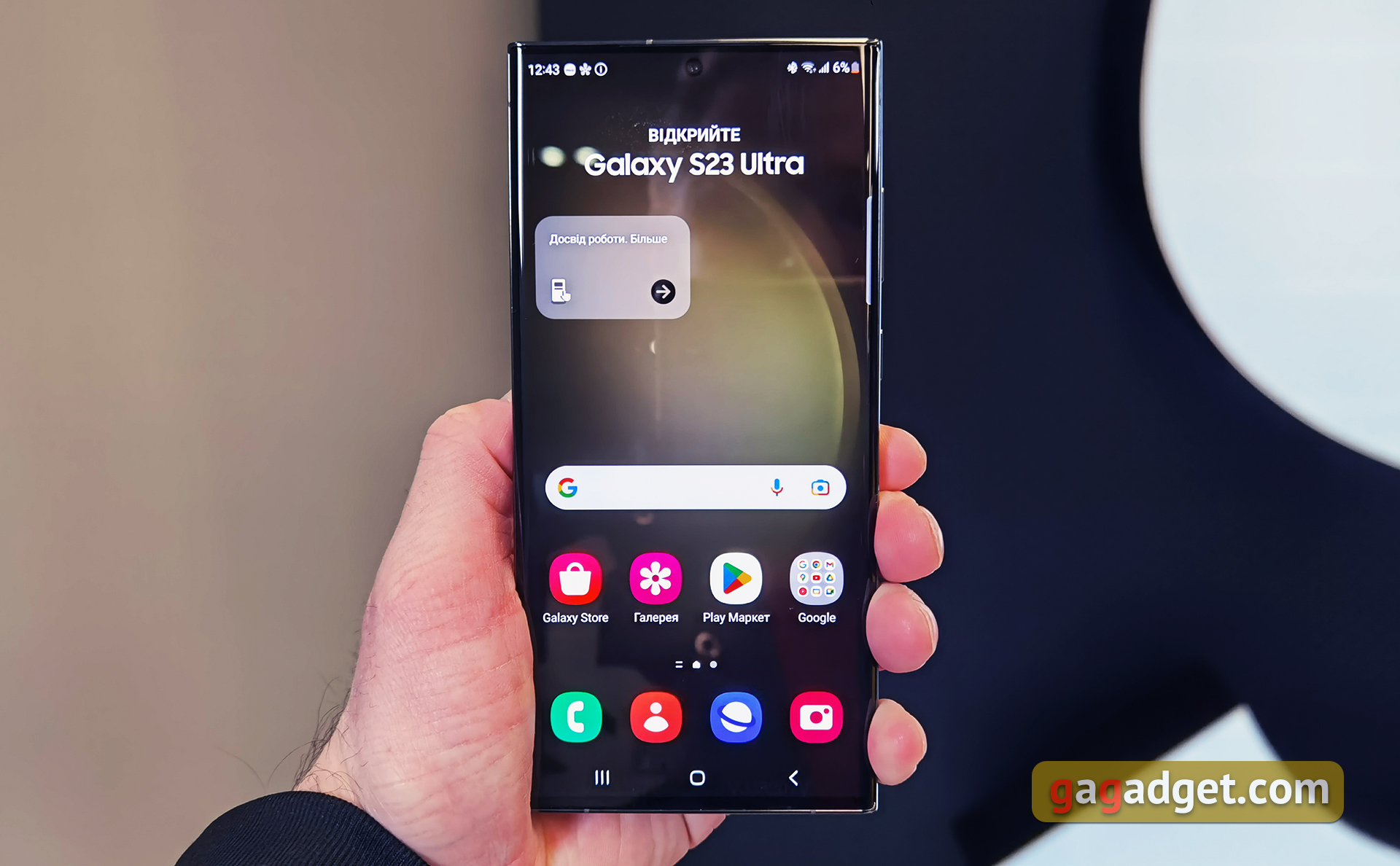
In general, the positioning and the main idea of Samsung Galaxy S23 Ultra remained unchanged. This is a flagship smartphone with top-of-the-line hardware, a flagship camera, and the S Pen electronic stylus, which has been taken over from the Note line, which is no longer in production. The shape of the body also resembles the Note line with its right angles. The body is made of the new Corning Gorilla Victus 2 glass, and the frame is metal. At first glance, it is very difficult to distinguish Samsung Galaxy S23 Ultra from Galaxy S22 Ultra. Although there are minimal differences. The display now has less rounded side edges, as does the back panel. So in general, the shape is more rectangular.
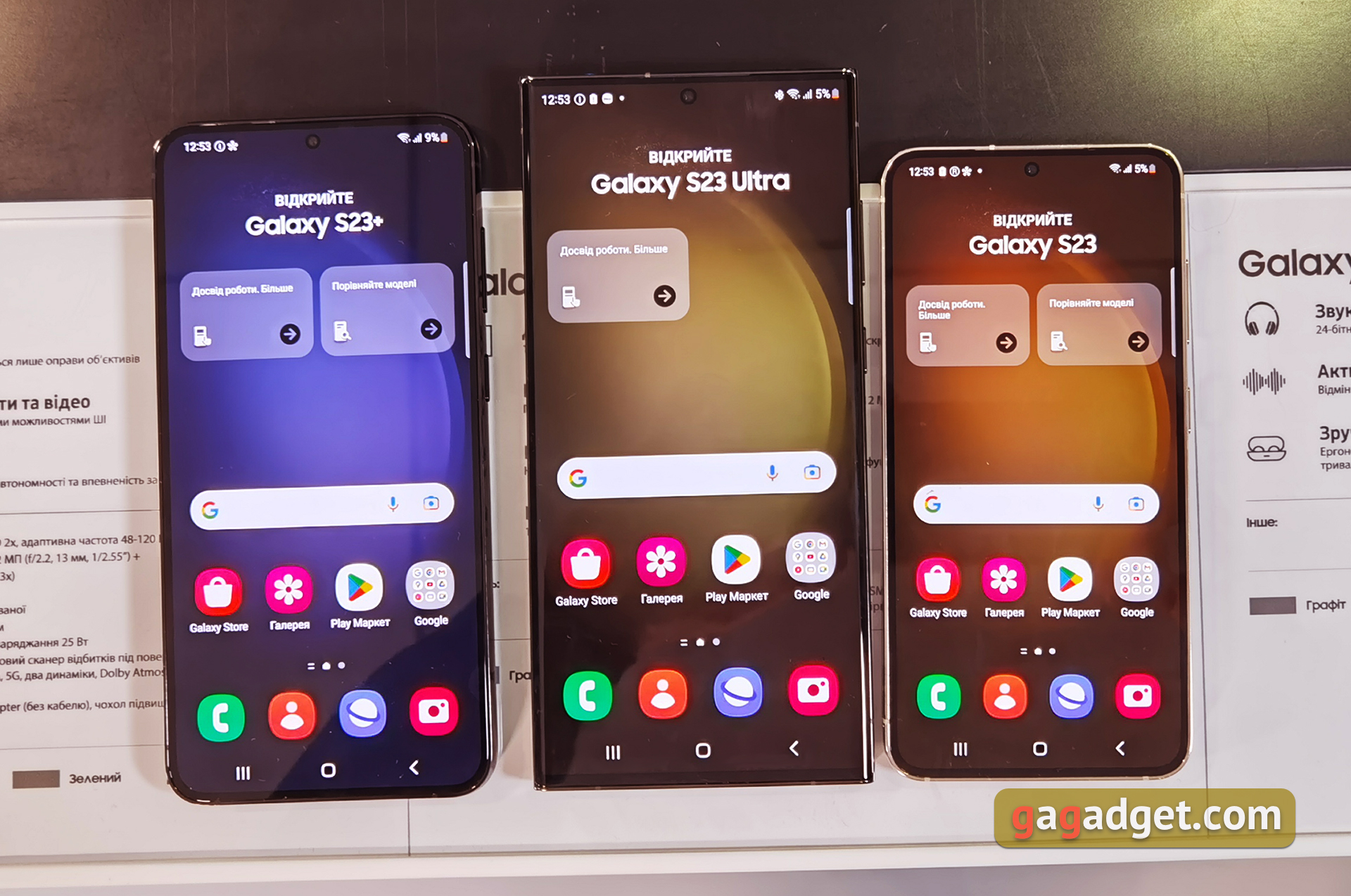
Buttons, tray, Type-C connector, main speaker, S Pen are in their usual places. The screen has the same 6.8-inch diagonal and a front camera in the form of a small hole. It uses a Dynamic AMOLED 2X display with a resolution of 3088x1440 and an adaptive refresh rate of 1-120 Hz thanks to LTPO production technology. The sensor reading frequency is 240 Hz. The peak brightness is 1750 nits, and there is support for Dolby Vision and HDR10+ standards. We will study it in more detail during detailed testing.
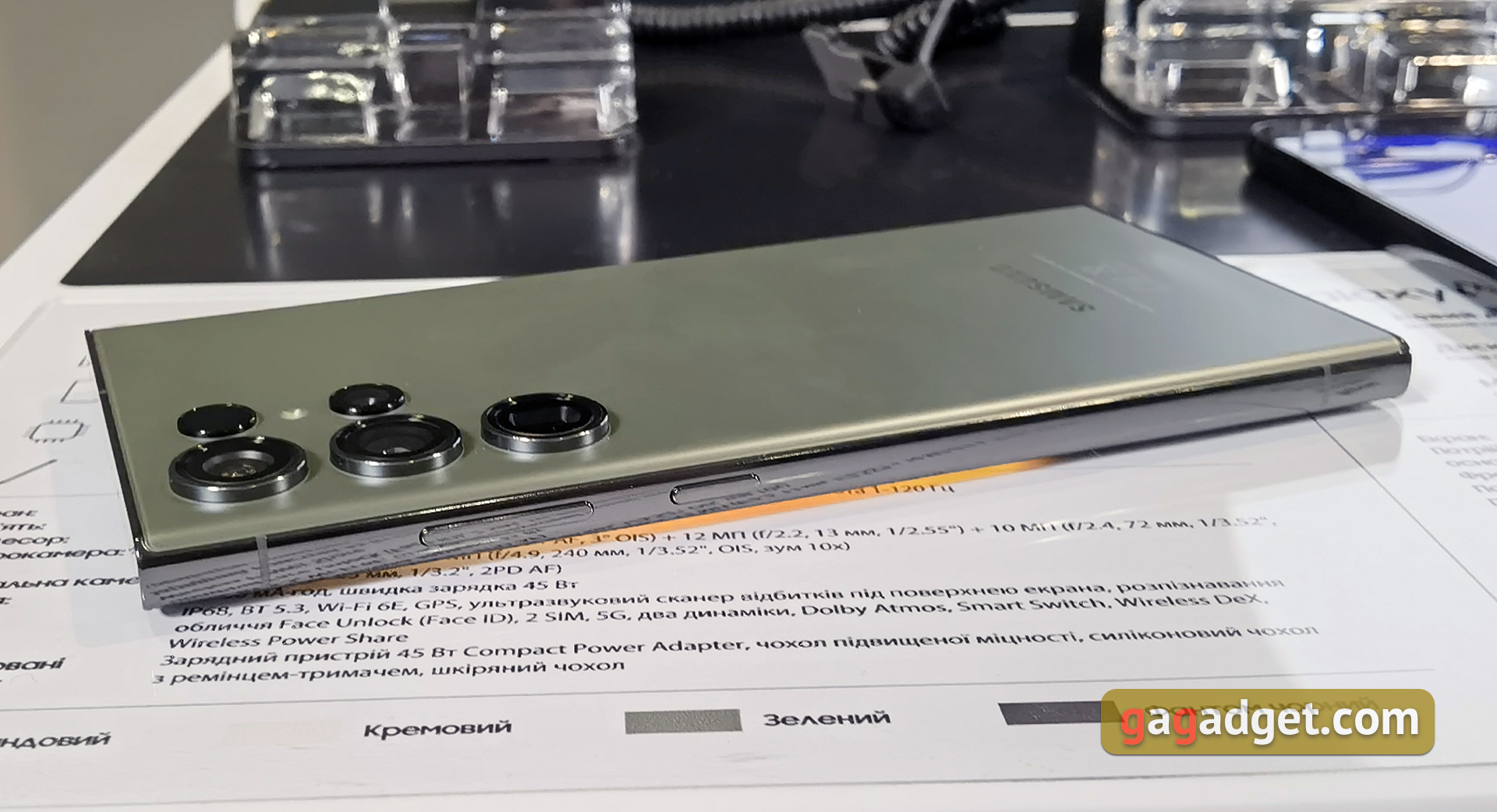
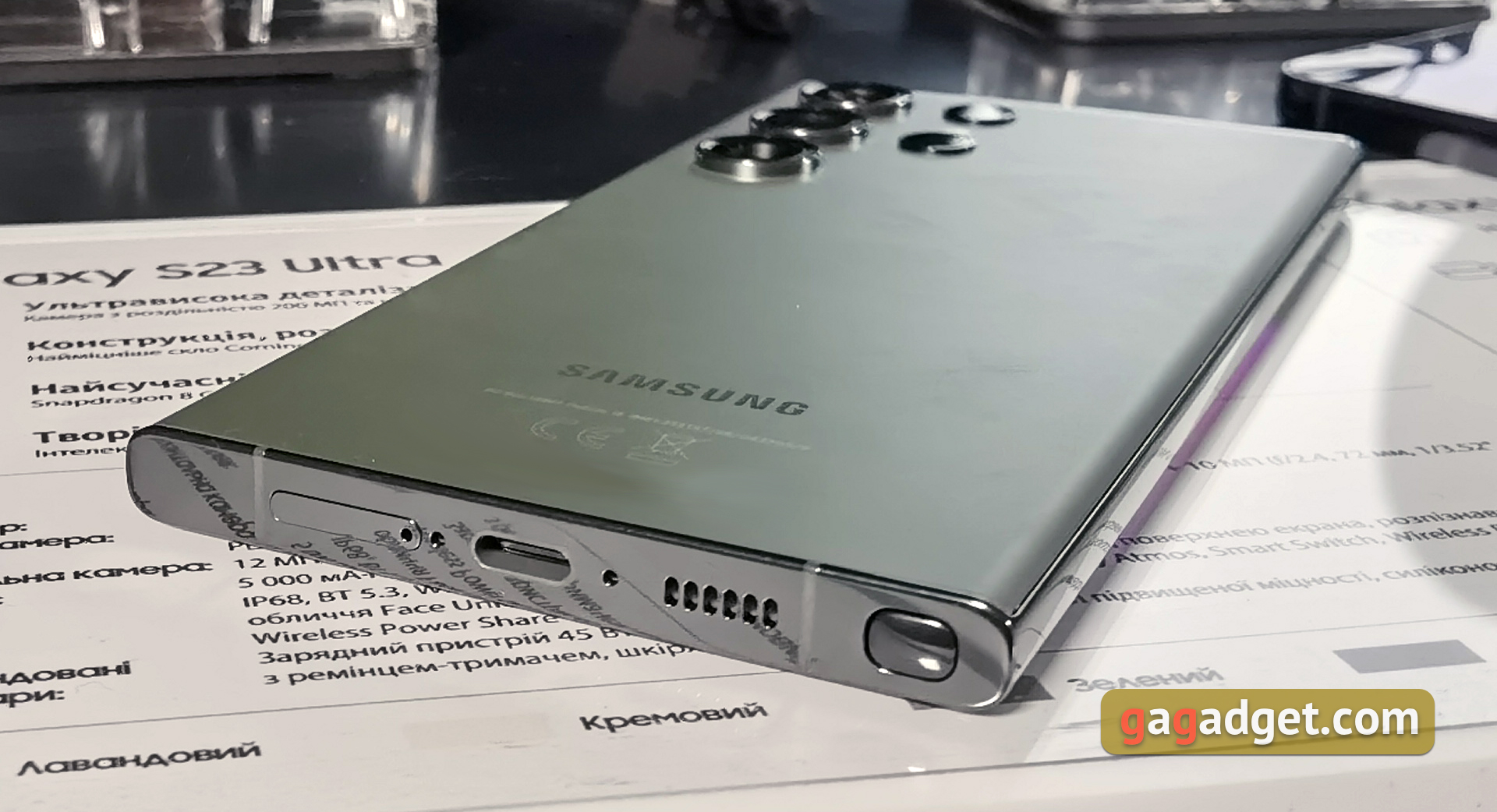
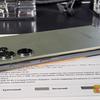
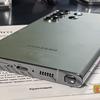
The back cover and individual camera lenses, which protrude significantly above the surface, remain unchanged. There are four colour options: black, lavender, cream and green. Unfortunately, the burgundy colour was dropped. In all cases, the glass is frosted, so it won't collect prints very well. The smartphone is IP68 dust and water resistant and can withstand immersion in water to a depth of 1.5 metres for up to half an hour.
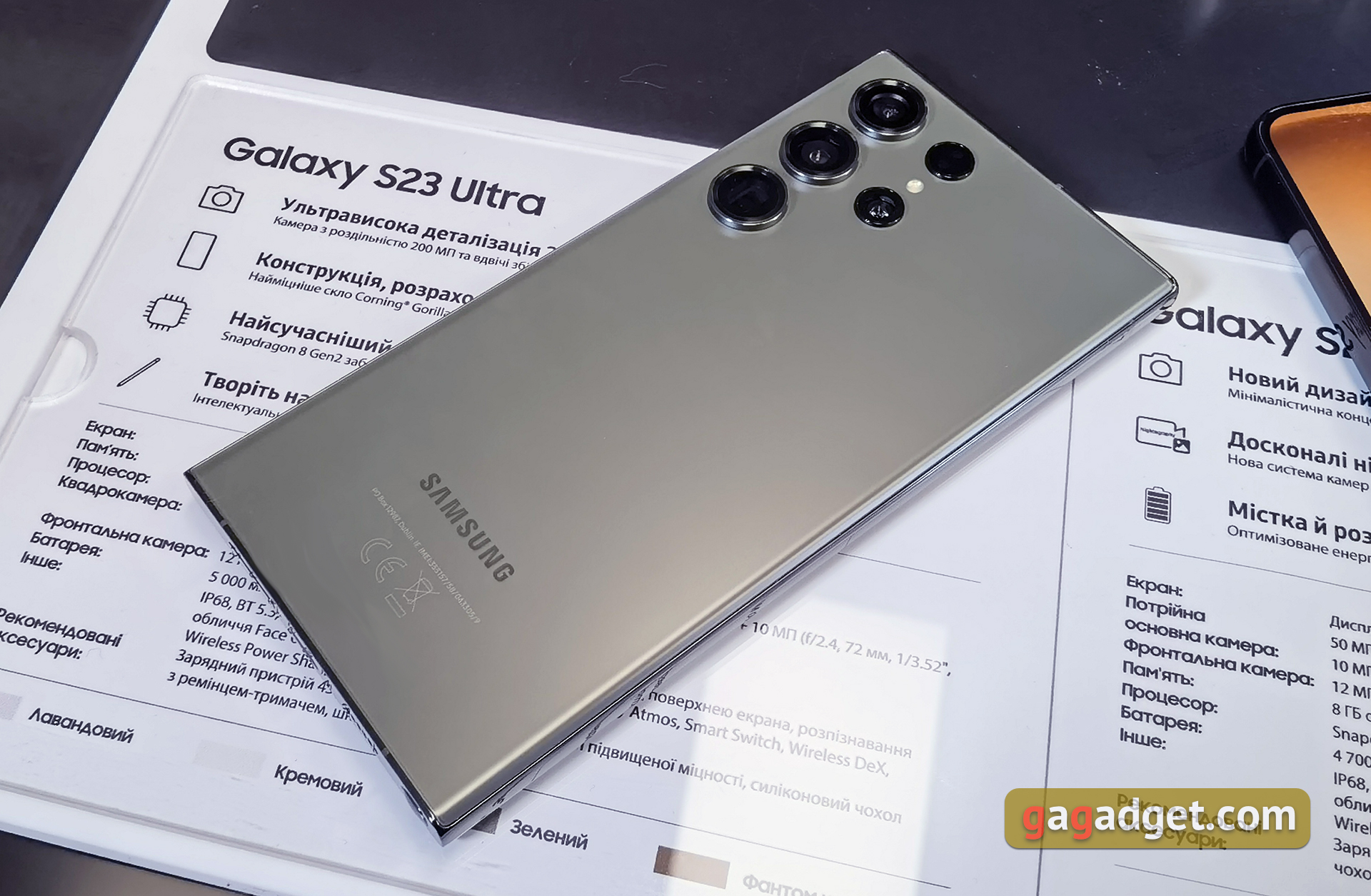
Now let's talk a little about what's inside. For many years, Samsung Galaxy S flagships for our region came with Samsung Exynos processors. They were slightly inferior to Qualcomm Snapdragon in terms of performance and sometimes had problems with overheating and higher power consumption. Some users bought unofficial smartphones for other regions that used Snapdragon. This year, the entire lineup, regardless of region, received the flagship Qualcomm Snapdragon 8 Gen 2 Mobile Platform for Galaxy.
It differs from the regular version by a powerful core overclocked to 3.36 GHz (instead of the standard 3.19 GHz) and a 719 MHz Adreno 740 graphics accelerator (instead of the standard 680 MHz). RAM can be 8 or 12 GB, and internal storage can be 256/512 GB or 1 TB. The new high-speed UFS 4.0 memory is used. The battery capacity has not changed since last year: 5000 mAh. Therefore, the battery life will depend on the optimisation of the new powerful processor and operating system with the new One UI 5.1 shell. It supports 45W fast wired charging and 15W wireless charging, as well as 4.5W reverse wireless charging for accessories.
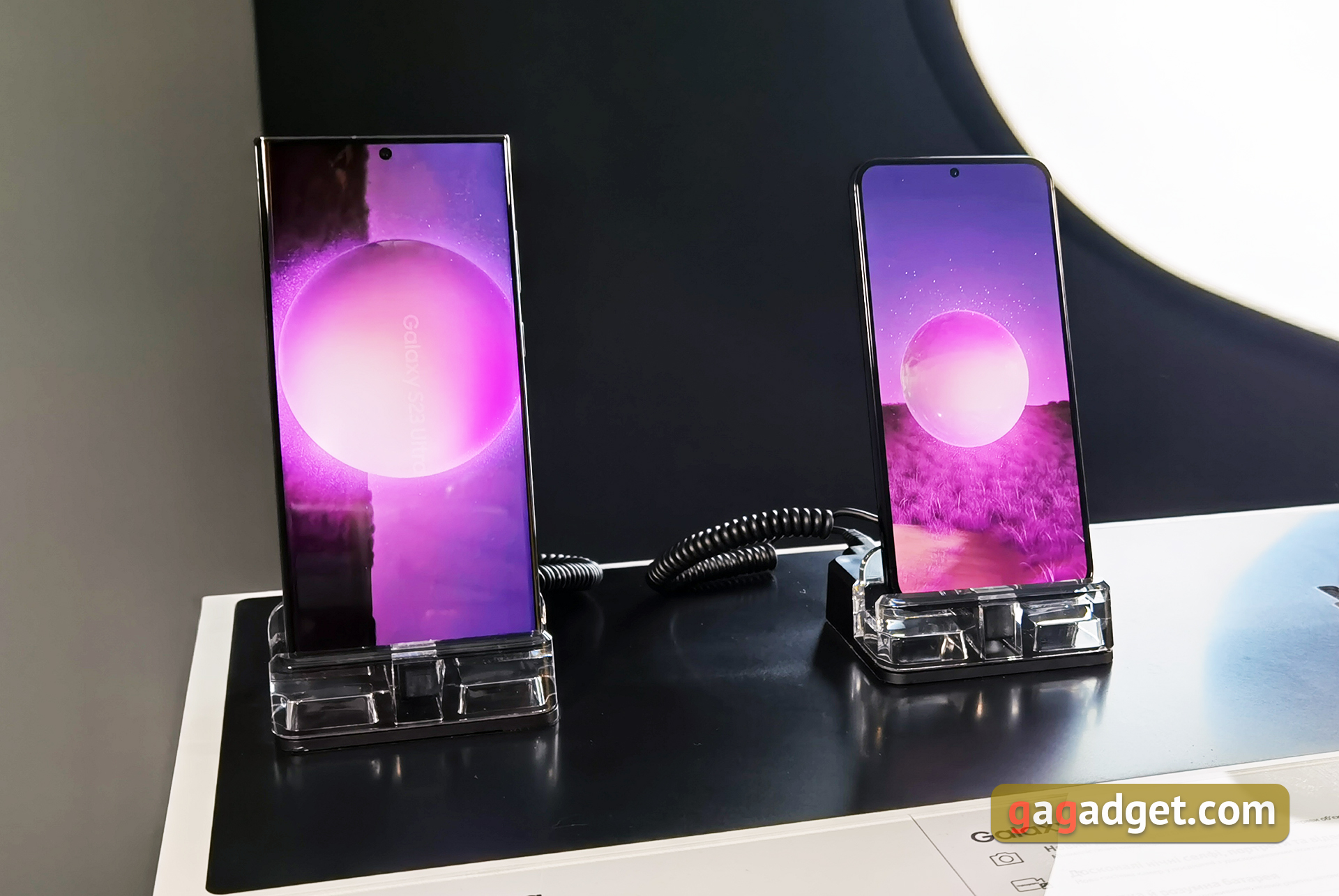
The rear camera, as before, includes 4 modules. The main one, 3x telephoto, 10x periscopic telephoto and ultra-wide-angle. The changes primarily concern the main camera. It received a new 200-megapixel module. In the standard mode, 16 pixels are combined into one, and the image resolution is 12.5 MP. Although there is also a 200 MP mode. For more discerning users who are well versed in photography, there is a separate Expert RAW application that saves raw photos in a resolution of up to 50 MP and allows them to be processed at their own whim.

As for the S Pen, there are no noticeable changes, both in terms of design and functionality. Small size, a single physical button, recharging while in the smartphone, and Bluetooth LE connectivity. Additional sensors include a gyroscope and accelerometer, which support gestures in the air. The S Pen can be used not only as a note-taking and drawing tool, but also as a remote control. The input delay is only 2.8 ms, and the pen recognises the pressure and angle of the pen.
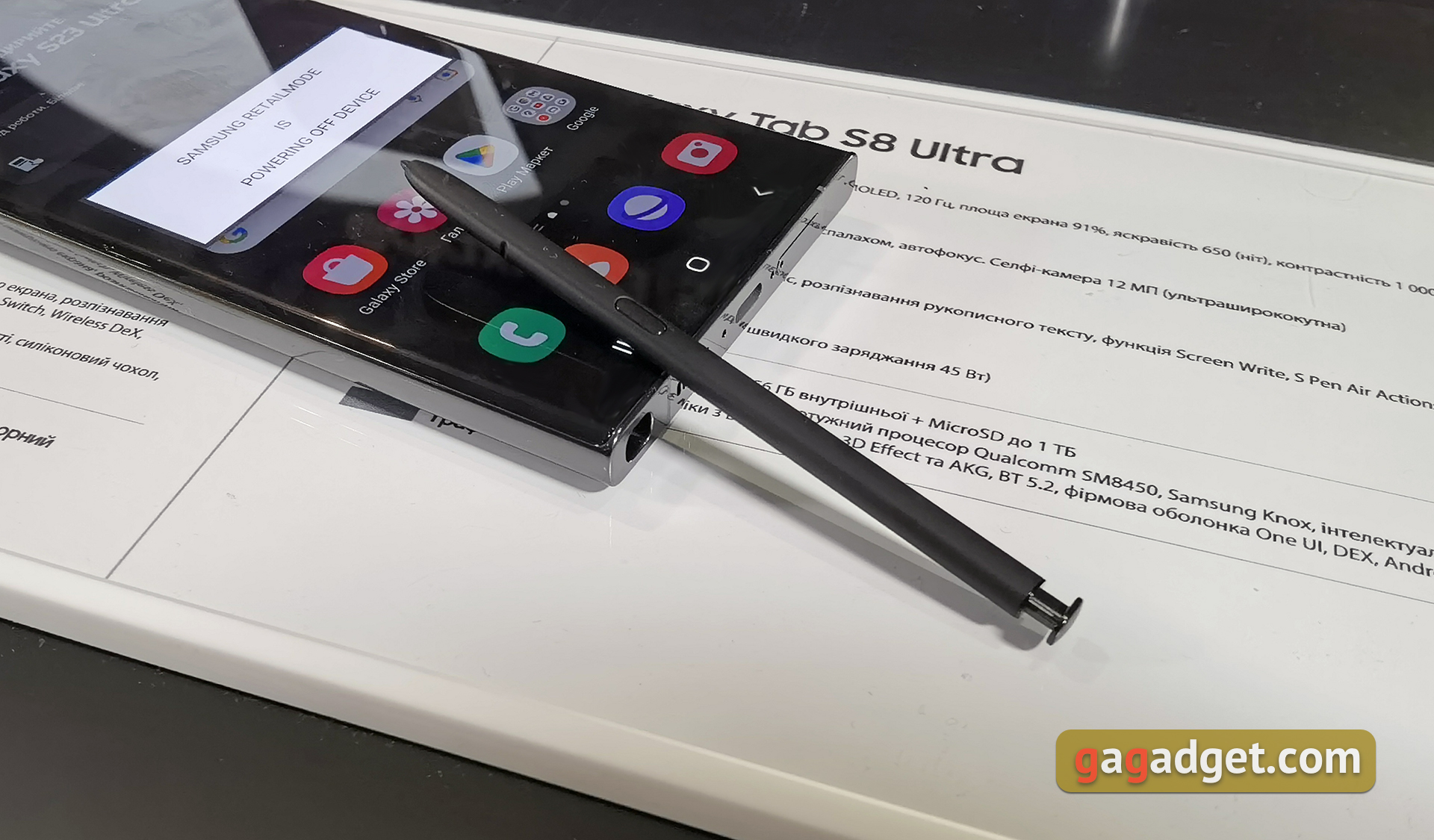
Features and technical differences from Galaxy S22 Ultra:
| Specifications | ||
|---|---|---|
| Samsung Galaxy S23 Ultra | Samsung Galaxy S22 Ultra | |
| Display | Curved on the sides Dynamic AMOLED 2x, 6.8 inches, 3088x1440 (aspect ratio 20:9), 516 ppi, HDR10+, Dolby Vision, 1-120 Hz, Gorilla Glass Victus 2, peak brightness 1750 nits | Curved on the sides Dynamic AMOLED 2x, 6.8 inches, 3088x1440 (aspect ratio 20:9), 516 ppi, HDR10+, Dolby Vision, 1-120 Hz, Gorilla Glass Victus+, peak brightness 1750 nits |
| Body | Dimensions: 163.4x78.1x8.9 mm, weight: 233 g | dimensions: 163.3x77.9x8.9 mm, weight: 228 g |
| Processor | 64-bit 4nm Qualcomm Snapdragon 8 Gen 2 Mobile Platform for Galaxy, 1x3.36 GHz Cortex-X3, 2x2.8 GHz Cortex-A715, 2x2.8 GHz Cortex-A710, 3x2.0 GHz Cortex-A510, Adreno 740 719 MHz graphics | 64-bit 4nm Samsung Exynos 2200, 1xARM Cortex-X2, 2.8 GHz, 3xARM Cortex-A710 2.5 GHz, 4xARM Cortex-A510 1.7 GHz, Neural Processing Unit (NPU), Xclipse 920 graphics |
| RAM | 8/12 GB | 8/12 GB |
| Flash memory | 256/512 GB/1 TB UFS 4.0 | 128/256/512 GB UFS 3.1 |
| Camera |
200 MP (f/1.7, 23 mm EPS, 1/1.3", 0.6µm, Dual Pixel PDAF, OIS); 10 MP periscopic telephoto (f/4.9, 230 mm EPS, 1/3.52", 1.12µm, Dual Pixel PDAF, OIS, 10x zoom); 10 MP telephoto (f/2.4, 70 mm, 1/3.52", 1.12µm, Dual Pixel PDAF, OIS, 3x zoom); ultra-wide-angle 12 MP (f/2.2, 13 mm, 120˚, 1/2.55", 1.4µm, Dual Pixel PDAF); flash, video 8K@30fps, 2160p@60fps, 1080p@240fps, 720p@960fps; front camera: 12 MP (f/2.2, 25 mm, PDAF) |
108 MP (f/1.8, 23 mm EPS, 1/1.33", 0.8 µm, Dual Pixel PDAF, OIS); periscopic telephoto 10 MP (f/4.9, 230 mm EPS, 1/3.52", 1.12µm, Dual Pixel PDAF, OIS, 10x zoom); telephoto 10 MP (f/2.4, 70 mm, 1/3.52", 1.12µm, Dual Pixel PDAF, OIS, 3x zoom); ultra-wide-angle 12 MP (f/2.2, 13 mm, 120˚, 1/2.55", 1.4µm, Dual Pixel PDAF); flash, video 8K@24fps, 2160p@60fps, 1080p@240fps, 720p@960fps; front camera: 40 MP (f/2.2, 26 mm, 1/2.8", 0.7µm, PDAF) |
| Wireless technologies | Wi-Fi 802.11 a/b/g/n/ac/6e(tri-band), Bluetooth 5.3 LE, NFC | Wi-Fi 802.11 a/b/g/n/ac/6e (dual-band, 2.4 and 5 GHz), Bluetooth 5.2 LE, NFC |
| GPS | GPS, A-GPS, GLONASS, BDS, GALILEO | GPS, A-GPS, GLONASS, BDS, GALILEO |
| Battery | 5000 mAh, non-removable, 45W fast charging, 15W wireless charging, reverse wireless charging | 5000 mAh, non-removable, 45W fast charging, 15W wireless charging, wireless charging reverse |
| Operating system | Android 13 + One UI 5.1 | Android 12 + One UI 4.1 |
| Sim card | 2xNanoSIM | 2xNanoSIM |
| Additionally | S Pen, IP68 dust and water protection, ultrasonic in-screen fingerprint scanner, Samsung Wireless DeX | S Pen, IP68 dust and water protection, ultrasonic in-screen fingerprint scanner, Samsung Wireless DeX |
What's new in Samsung Galaxy S23 and Galaxy S23+?
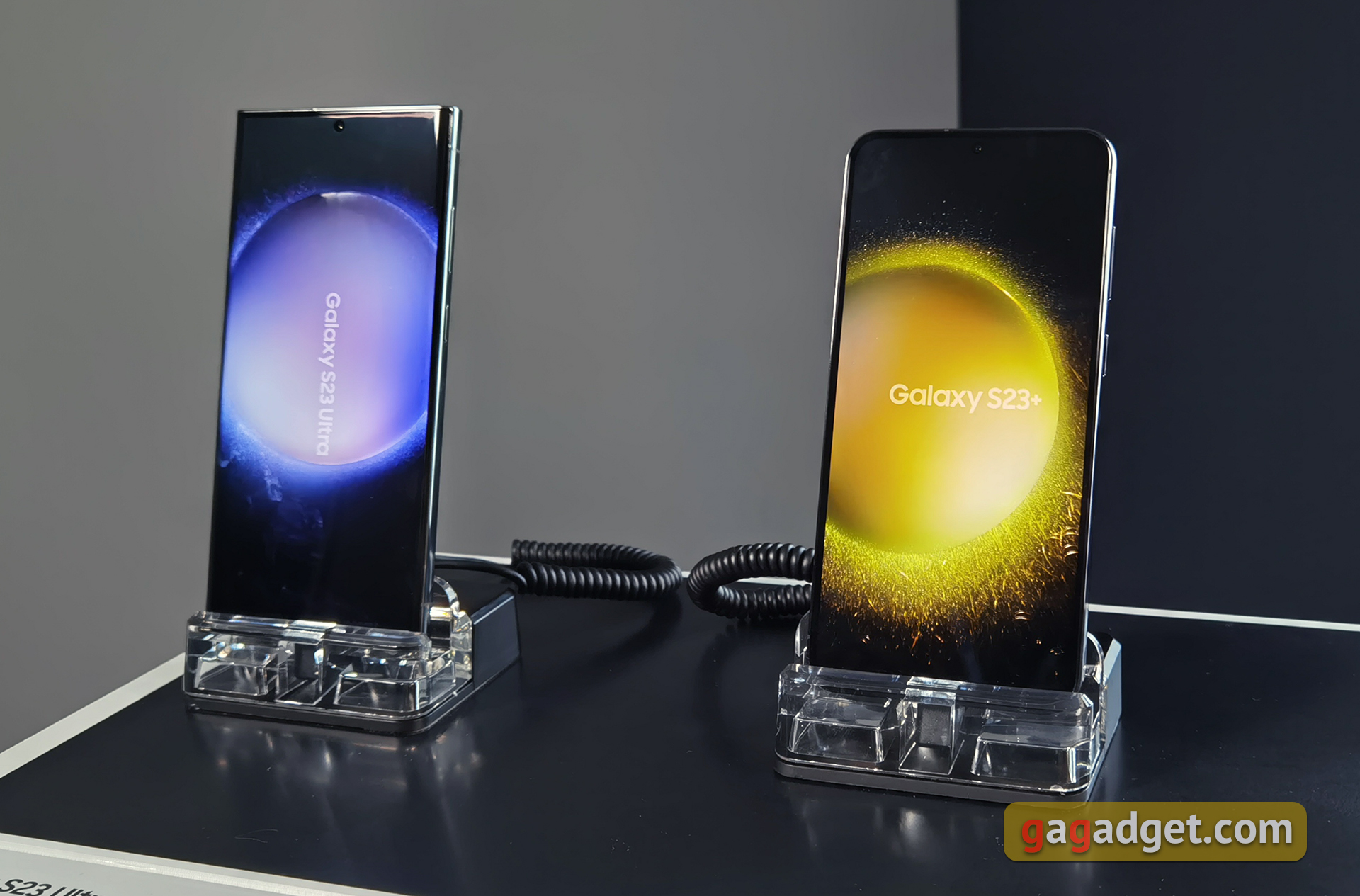
Samsung Galaxy S23 and Galaxy S23+ have been updated both inside and out. Although we can't say that they are radical either. The panels are also made of Corning Gorilla Glass Victus 2, and the frame and unibody are metal. The back cover of the smartphones has been slightly modified. Instead of a common metal block of rear cameras, there are now separate lenses protruding from the surface, as in the older model. On the one hand, Samsung is moving towards minimalism in smartphone design, which is generally good. But on the other hand, protruding lenses will collect dust and can quickly get scratched. So you want to hide your smartphones in protective bumpers right away. The colour options are similar to the Ultra model, and the glass is frosted.
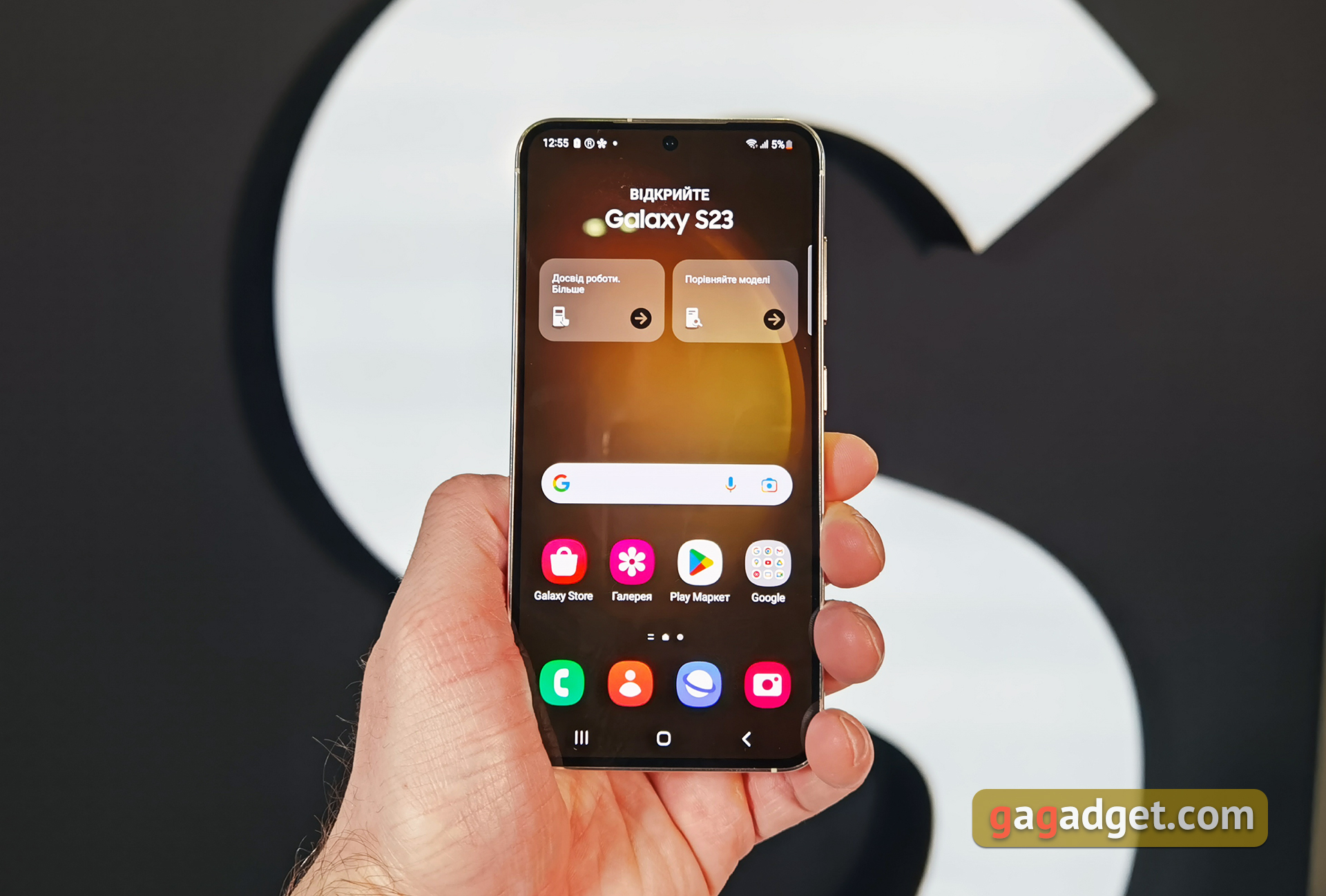
Other exterior aspects are familiar from last year's lineup: a glossy, streamlined metal frame and a flat display with a small hole for the front camera. The displays remain unchanged: 6.1 inches in the Samsung Galaxy S23 and 6.6 inches in the Galaxy S23+, so the dimensions of the smartphones are very close to the previous line. Samsung Galaxy S23 is compact and very convenient to use with one hand. The smartphones use Dynamic AMOLED 2 screens with a resolution of 2340x1080 (19.5:9 aspect ratio) and a refresh rate of 48-120 Hz. There is support for HDR10+.
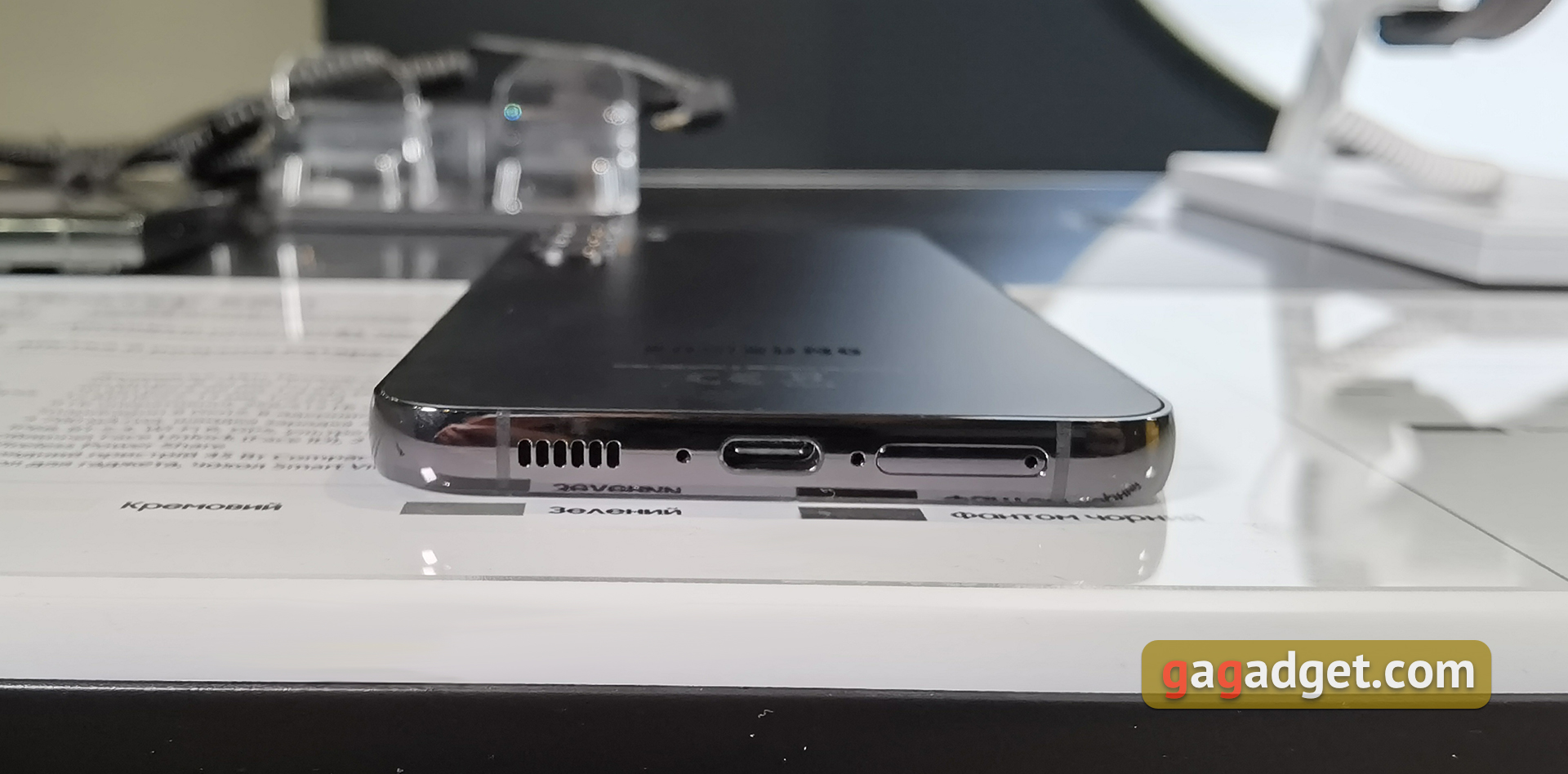
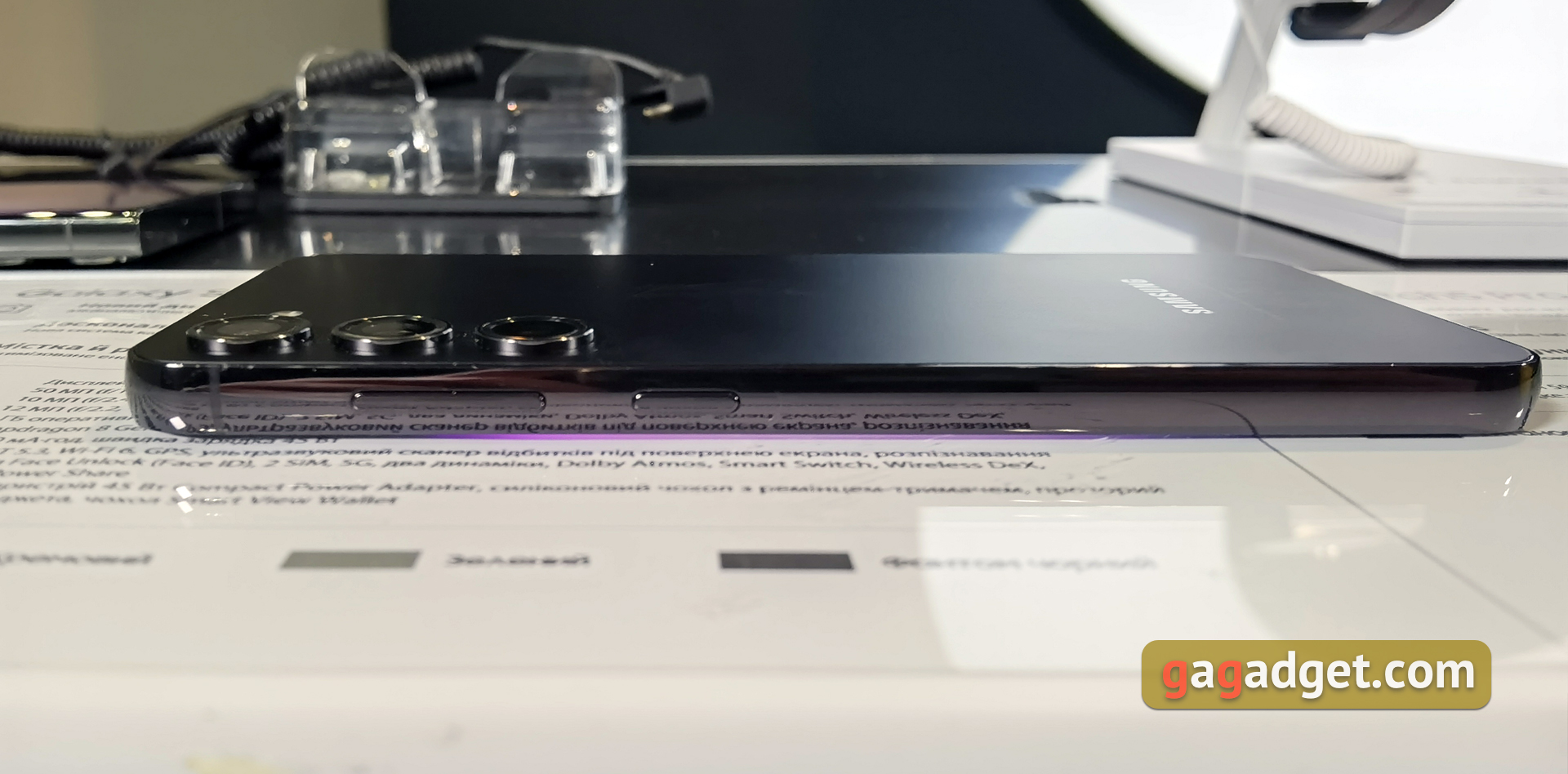

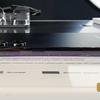
The younger models also have the top-of-the-line Qualcomm Snapdragon 8 Gen 2 processor with Adreno 740 graphics, so there's no need to worry about performance. The RAM is 8 GB, and the internal storage is 256/512 GB, UFS 3.1 or the new UFS 4.0, depending on the version. The battery capacity has increased slightly. Samsung Galaxy S23 received a 3900 mAh battery instead of 3700 mAh. Samsung Galaxy S23+ - 4700 mAh instead of 4500. The larger model supports 45W fast wired charging, while the smaller model supports 25W. Both models also support 15W wireless charging and 4.5W reverse wireless charging for accessories. They run on Android 13 with the updated One UI 5.1 shell.

The configuration of the rear cameras remained unchanged. There are three of them: A 50-megapixel main camera with f/1.8 aperture, multi-directional PDAF and optical stabilisation, a 10-megapixel telephoto camera with f/2.4 aperture, PDAF, optical stabilisation and 3x zoom, and a 12-megapixel ultra-wide-angle camera with f/2.2 aperture, 120˚ viewing angle, without autofocus. Instead of a 10-megapixel front-facing camera, it is now 12 MP, f/2.2, 25 mm with phase detection autofocus. So, in general, the quality of photos and videos will depend on the processing algorithms.
| Technical specifications | ||
|---|---|---|
| Samsung Galaxy S23 | Samsung Galaxy S23+ | |
| Display | Dynamic AMOLED 2x, 6.1 inches, 2340x1080 (19.5:9 aspect ratio), 422 ppi, HDR10+, 48-120 Hz, Gorilla Glass Victus 2 | Dynamic AMOLED 2x, 6.6 inches, 2340x1080 (19.5:9 aspect ratio ),390 ppi, HDR10+, 48-120 Hz, Gorilla Glass Victus 2 |
| Body | Dimensions: 146.3x70.9x7.6 mm, weight: 167 g | dimensions: 157.8x76.2x7.6 mm, weight: 195 g |
| Processor | 64-bit 4nm Qualcomm Snapdragon 8 Gen 2 Mobile Platform for Galaxy, 1x3.36 GHz Cortex-X3, 2x2.8 GHz Cortex-A715, 2x2.8 GHz Cortex-A710, 3x2.0 GHz Cortex-A510, Adreno 740 719 MHz graphics | 64-bit 4nm Qualcomm Snapdragon 8 Gen 2 Mobile Platform for Galaxy, 1x3.36 GHz Cortex-X3, 2x2.8 GHz Cortex-A715, 2x2.8 GHz Cortex-A710, 3x2.0 GHz Cortex-A510, Adreno 740 719 MHz graphics |
| RAM | 8 GB | 8 GB |
| Flash memory | 128/256 GB UFS 3.1 | 256/512 GB UFS 3.1/UFS 4.0 |
| Camera |
50 MP (f/1.8, 24 mm, 1/1.57", 1.0µm, multi-directional PDAF, OIS); telephoto 10 MP (f/2.4, 70 mm, 1/3.94", 1.0µm, PDAF, OIS, 3x zoom); ultra-wide-angle 12 MP (f/2.2, 13 mm, 120˚, 1/2.55" 1.4µm); flash, video 8K@30fps, 2160p@60fps, 1080p@240fps, 720p@960fps; front camera: 12 MP (f/2.2, 25 mm, PDAF) |
50 MP (f/1.8, 24 mm, 1/1.57", 1.0µm, multi-directional PDAF, OIS); telephoto 10 MP (f/2.4, 70 mm, 1/3.94", 1.0µm, PDAF, OIS, 3x zoom); ultra-wide-angle 12 MP (f/2.2, 13 mm, 120˚, 1/2.55" 1.4µm); flash, video 8K@24fps, 2160p@60fps, 1080p@240fps, 720p@960fps; front camera: 12 MP (f/2.2, 25 mm, PDAF) |
| Wireless technologies | Wi-Fi 802.11 a/b/g/n/ac/6e (tri-band), Bluetooth 5.3 LE, NFC | Wi-Fi 802.11 a/b/g/n/ac/6e (tri-band), Bluetooth 5.3 LE, NFC |
| GPS | GPS, A-GPS, GLONASS, BDS, GALILEO | GPS, A-GPS, GLONASS, BDS, GALILEO |
| Battery. | 3900 mAh, non-removable, 25W fast charging, 15W wireless charging, wireless charging | 4700 mAh, non-removable, 45W fast charging,15W wireless charging, reverse wireless charging |
| Operating system | Android 13 + One UI 5.1 | Android 13 + One UI 5.1 |
| Sim card | 2xNanoSIM | 2xNanoSIM |
| Additionally | IP68 dust and water protection, ultrasonic fingerprint scanner in the screen, Samsung Wireless DeX | IP68 dust and water protection, ultrasonic fingerprint scanner in the screen, Samsung Wireless DeX |
Key Features in Brief
The Samsung Galaxy S23 is a scheduled update to the flagship line of smartphones that brought some important innovations this year. The Samsung Galaxy S23 Ultra has a new 200-megapixel camera, while the lower-end models have a slightly updated design and larger batteries. Also, all new smartphones have finally switched to the flagship Qualcomm Snapdragon 8 Gen 2 processors, which users have been waiting for for a long time. The lineup looks absolutely up-to-date, meets the requirements for modern top-end smartphones in all respects, and offers different sizes to suit every taste. Soon, gg will have detailed smartphone reviews where we will take a closer look at the Samsung Galaxy S23 Ultra, Galaxy S23, and Galaxy S23+.
Do Deeper:
- Samsung Galaxy Fold4 review: the best smartphone for geeks
- Samsung Galaxy Flip4 review: flagship Android smartphone clamshell
- Hello, Hi-Res Audio without wires! Review of the flagship TWS headphones Samsung Galaxy Buds2 Pro
- Samsung Galaxy Watch5 Pro and Watch5 review: plus battery life, minus physical bezel
- Samsung Galaxy S22 and Galaxy S22+ Review: Universal Flagships
